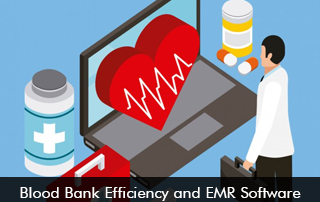Blood banks play a crucial role in healthcare. They collect, store, and supply blood for medical treatments. Ensuring efficiency in blood banks is essential. This is where EMR software comes in. This software streamlines many processes, improving overall efficiency.
Understanding EMR Software
Electronic Medical Records (EMR) software digitizes patient records. Traditionally, medical records were on paper. This was cumbersome and prone to errors. EMR changes that. It stores all patient data electronically. This includes medical history, test results, and treatment plans.
Benefits of EMR Software for Blood Banks
1. Improved Record Keeping
Accurate record-keeping is vital for blood banks. All donor and recipient information is stored electronically. This reduces errors. It also ensures that records are easily accessible.
2. Enhanced Tracking
Tracking blood donations and supplies is a complex task. EMR software simplifies this. It allows for real-time tracking of blood inventory. This means blood banks can quickly know their stock levels. They can also track the age of stored blood. This helps in managing the shelf life of blood supplies.
3. Efficient Donor Management
Managing donors is crucial for blood banks. EMR helps in maintaining detailed donor profiles. These profiles include donation history and eligibility status. This ensures that only eligible donors are contacted for donations. It also helps in scheduling donation appointments efficiently.
4. Streamlined Communication
Effective communication is key in blood banks. It enables seamless communication between different departments. For example, the blood collection team can easily update the storage team about new donations. This ensures that all teams are on the same page.
Case Study: Blood Bank Efficiency in Action
Let’s consider a real-life scenario. A blood bank in a busy city implemented EMR software. Before the implementation, they faced many challenges. These included misplaced records, inefficient tracking, and communication gaps.
After implementing EMR, things changed dramatically. Record-keeping became accurate and accessible. They were tracking blood inventory in real-time as possible. Donor management improved significantly. Communication between departments became seamless. Overall, their efficiency improved by over 40%.
Overcoming Challenges
Despite its benefits, some challenges come with EMR software. These include initial setup costs and training staff to use the software. However, these challenges are manageable. The long-term benefits outweigh the initial hurdles.
1. Initial Setup
Setting up EMR software requires investment. This includes purchasing the software and necessary hardware. However, this is a one-time cost. Once set up, the software significantly reduces operational costs.
2. Staff Training
Training staff to use EMR software is essential. Initially, there might be resistance to change. However, with proper training, staff can quickly adapt. Many EMR software providers offer training programs. These programs are designed to make the transition smooth.
Future of Blood Banks with EMR Software
The future looks promising with EMR software. As technology advances, EMR software will become even more efficient. Integration with other healthcare systems will be possible. This means blood banks can easily share data with hospitals and clinics. This will further improve efficiency and patient care.
1. Advanced Analytics
EMR software will soon include advanced analytics. This will allow blood banks to analyze data better. They can predict donation trends and manage inventory more efficiently. This will also help in identifying areas for improvement.
2. Mobile Integration
Mobile integration is another exciting prospect. Blood bank staff can access EMR software on their mobile devices. This means they can update records and track inventory on the go. This will further enhance efficiency.








